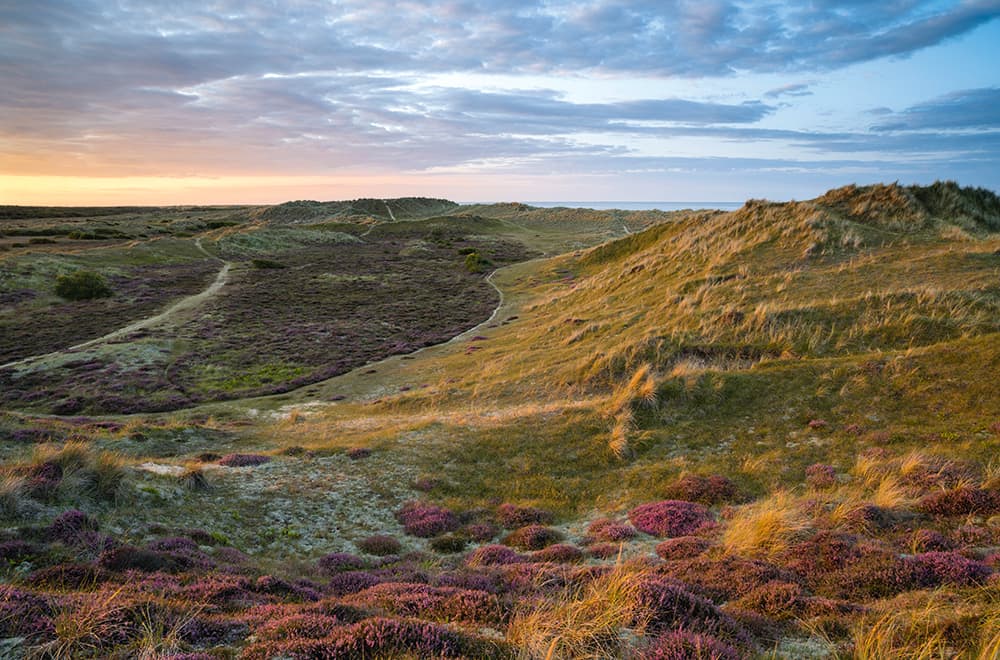 Beaches with dune systems have always held a huge fascination for me. The Norfolk coast, where I photograph most often, has what you’d call a ‘soft’ coastline, I suppose. Don’t get me wrong, it can be wild, but we do not have the kind of imposing rocks, towering cliffs or indented bays where the sea can thrash around that you get in other parts of the country.
Beaches with dune systems have always held a huge fascination for me. The Norfolk coast, where I photograph most often, has what you’d call a ‘soft’ coastline, I suppose. Don’t get me wrong, it can be wild, but we do not have the kind of imposing rocks, towering cliffs or indented bays where the sea can thrash around that you get in other parts of the country.
What we do have in my home county, though, are brilliant examples of fine, atmospheric,expansive beaches, and their dunes have become something of an obsession for me over the years.
As my photography has developed over time, I have realised such places are not one-dimensional locations, either. While some may believe they lack a certain wow factor in this picture-hungry world, where dramatic lighting and locations are the order of the day, I have always gone for the subtler image with a subtle colour palette. As such, these coastal environments suit the way I work perfectly.
The challenge of beach photography
One reason I love photographing dunes is that I see it as a challenge to wrestle an image from such a location. Compositions are not always obvious, which means I walk around and observe more – a lot more – than I would at any other location. Increasingly, I use my mobile phone or a compact camera to record ideas and scenes that I can then work upon and expand.
The weather conditions affect how I go about a shoot. If it’s a cloudless morning or evening, I usually search out abstracts, concentrating on a small area and, where possible, not including the sky.
One of the main draws for me when shooting dunes is the movement of grasses. I find it quite beautiful, and like to spend a while trying to find the correct shutter speed. It either needs to hint at subtle movement or, if it’s a windy day, heighten the grasses’ wild toing and froing. It’s a good exercise to experiment with your shutter speeds. I like to use neutral- density filters to drag out the exposure or reach for a Lee Filters Big Stopper if I want a particularly abstract effect.
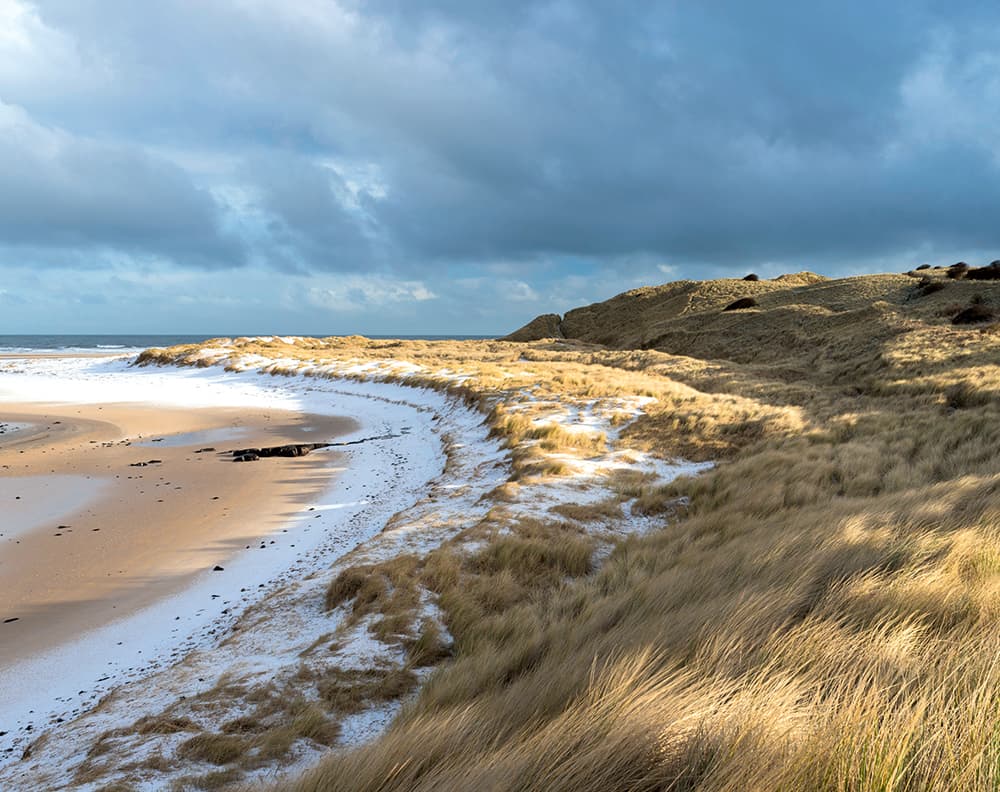
Budle Bay, Northumberland. This was just a flurry of snow, which disappeared within half an hour, but it made for an interesting compositional element. Nikon D800, 35mm, 1/20sec at f/11, ISO 100
Restful images
Once you have spent some time searching out abstract images such as these, you’ll start noticing the patterns that reveal themselves within the chaos of the thousands of stalks of grass. They can be very beautiful, restful images. When processing, I frequently reduce sharpness. If the image is blurrier, I may look at reducing the Clarity slider in Lightroom to a negative setting to give the image a soft, dreamy feel.
If I am shooting on a day that has a lovely cloudy sky, I look at the landscape differently, and usually aim to produce a wider-angle image with a ‘layered’ feel. At the very least, I scan the scene for something that draws me into the image and, ideally, through the frame.
Setting up and simply having a bulky mass of grasses in the foreground, while ignoring the possibility of using diagonal lead-in lines, can work against an image. If you’re lucky enough to be blessed with wild and dramatic conditions where the grasses are swaying in the breeze and there is wonderful golden light, I still feel you must take care to direct the eye through the picture and not be seduced by the dramatic light alone.
Finding a path
Paths through the dunes, curvatures of the grasses and sand patterns are all there to be featured in the image and, ideally, will help to create a flow. It is not always easy to get that flow, but as I said earlier, I do like a challenge and that’s important if we are to grow as photographers. Keep an eye on the light and, if it’s changeable, shoot some variations. There is such a huge difference in atmosphere between lit and unlit dunes, especially at the extremes of the day, and both have their merits and appeal. Light falling on grasses can produce some magical effects, especially if you take a more abstract approach, such as using intentional camera movement or ICM.
When processing images using these techniques, experiment with the colour- balance settings and don’t hold back on the contrast or curve controls. After processing more regular images time after time, it is nice to have a break from the monotony.

Cheswick, Northumberland. Intentional camera movement (ICM) can introduce a dream-like quality to your images. Nikon D800, 35mm, 1/200sec at f/8, ISO 400
The seasons
I find that the seasons can also influence your images greatly. Many people may not associate the coast with seasonal changes in plant life and their appearance, but my visits at different times of the year to Winterton, a beautiful beach only a short drive from my home, produce extremely varied results as we shift through the seasons, always offering something new.
Although summer is my least favourite time to shoot, there can be beautiful mists hanging among the dunes. However, my favourite times to shoot are late summer and early autumn, when the dunes are awash with intense purple heather. In autumn, the grasses and mosses take on beautiful tones. I enjoy winter for its wild feel and the low light on the dunes. In my opinion, it’s a light that cannot be beaten. The intense orange on dunes that comes at first or last light is a sight to behold.
With the help of my images and words, I hope that I have highlighted what this type of environment means to me, and I hope I have encouraged you to visit somewhere a little less dramatic and look for images among the dunes.
Too often, the photography we are bombarded with on social media is seeking the spectacular when, sometimes, it’s good to test yourself in a quieter environment and see what you can come away with.
ICM
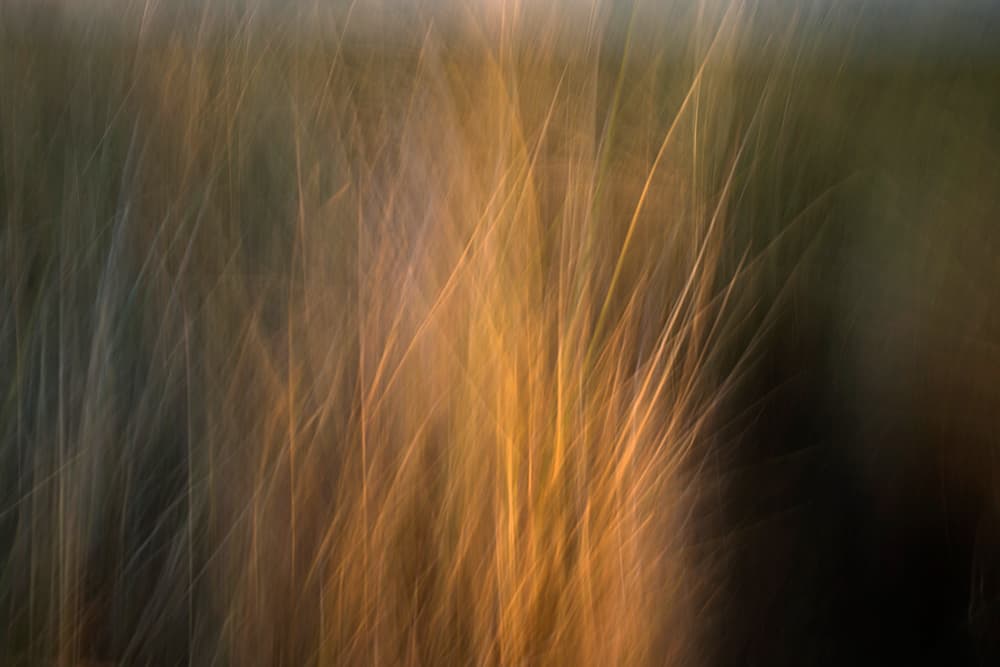 When I am on location, and after I have managed to make images I am happy with, I will often experiment and use intentional camera movement (ICM) to make images among the dunes. The wonderful thing about this technique is that it is fun and full of surprises. I always think it’s a nice way to finish a shoot. As photographers, we get stressed enough if the weather hasn’t played ball or we weren’t quite on our game. In my opinion, though, with ICM there are no rules, just time to experiment.
When I am on location, and after I have managed to make images I am happy with, I will often experiment and use intentional camera movement (ICM) to make images among the dunes. The wonderful thing about this technique is that it is fun and full of surprises. I always think it’s a nice way to finish a shoot. As photographers, we get stressed enough if the weather hasn’t played ball or we weren’t quite on our game. In my opinion, though, with ICM there are no rules, just time to experiment.
Dunes are a great subject for this type of technique, especially in lower light where lovely orangey tones are prevalent. Just let your experimental side come to the fore. Select different shutter speeds and increase your movement during the exposure, or make your movements jerky or move in a pattern. If you have a multi-exposure function, try this for even more artistic images.
Jon’s top tips to perfect beach photography
Composition
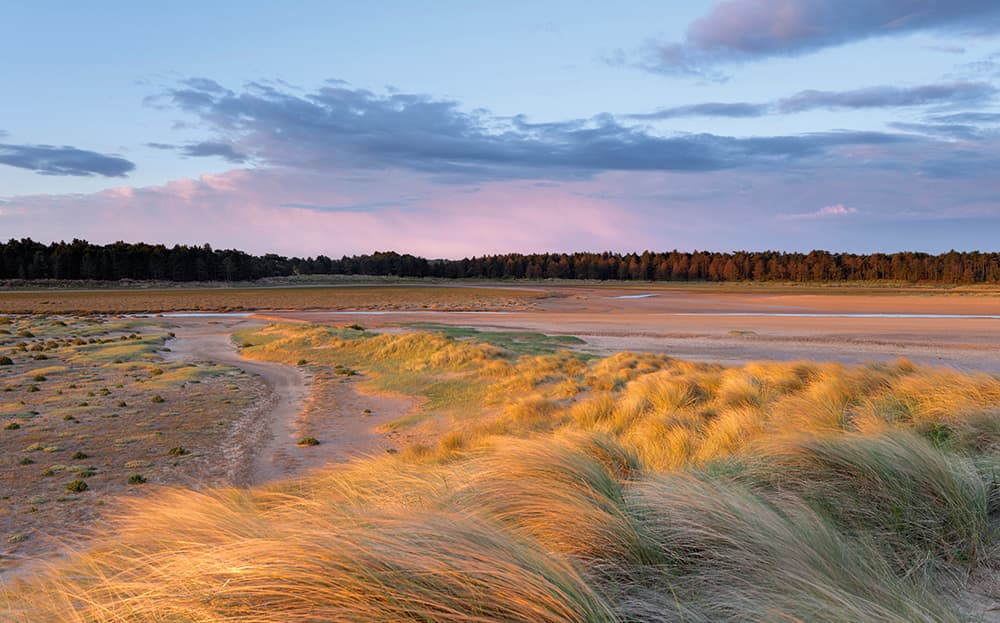 Make sure you find a way to lead the eye through the picture. Use pathways or natural curves in the dunes and grasses to lead into the frame. Avoid the bottom of your image being too busy, or bland and uninteresting.
Make sure you find a way to lead the eye through the picture. Use pathways or natural curves in the dunes and grasses to lead into the frame. Avoid the bottom of your image being too busy, or bland and uninteresting.
Framing decisions
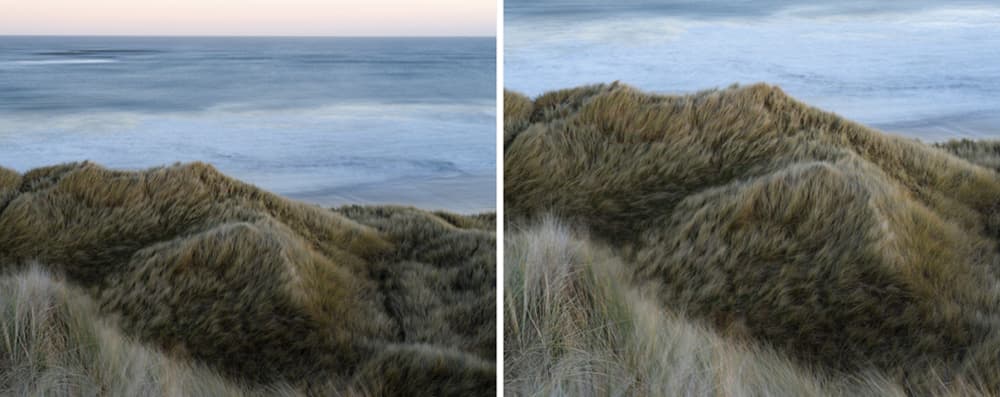 Spend time thinking if there is anything you can add to the picture or even subtract from it to make it stronger. Could you use a long exposure to emphasise movement? Does the sky need to be included or can you make a more successful image by adopting a more abstract approach? Take your time and analyse your set-up as there is often another picture within the composition you have chosen.
Spend time thinking if there is anything you can add to the picture or even subtract from it to make it stronger. Could you use a long exposure to emphasise movement? Does the sky need to be included or can you make a more successful image by adopting a more abstract approach? Take your time and analyse your set-up as there is often another picture within the composition you have chosen.
Alternatives
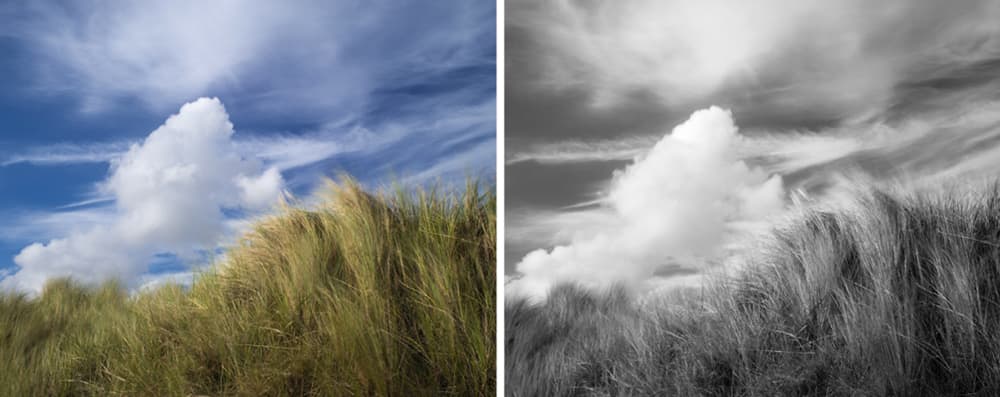 If at first the image you are viewing on the back of your camera isn’t inspiring you, try converting it to monochrome – it can instantly make for a more pleasing and arresting image. The delicate structures of the dunes in this photograph and the puff of cloud above look wonderful with such a soft tonal range. In other conditions, darker, angrier skies can benefit from a bit more processing to enhance the atmosphere.
If at first the image you are viewing on the back of your camera isn’t inspiring you, try converting it to monochrome – it can instantly make for a more pleasing and arresting image. The delicate structures of the dunes in this photograph and the puff of cloud above look wonderful with such a soft tonal range. In other conditions, darker, angrier skies can benefit from a bit more processing to enhance the atmosphere.
Beach photography kit list
6-stop and 10-stop filters
These filters are ideal for adding a more artistic element to an image. use them to heighten or accentuate movement in the scene, such as marram grass swaying in the wind or the action of the waves.
Tripod
Once you start using long shutter speeds, a tripod is essential. Mine is fitted with spikes, so i can dig it into the sand for extra stability. if you don’t have spikes, try hanging your camera bag from the tripod hook attached to a bungee cord.
Compact camera or phone
Use your mobile phone or compact camera to assess compositions before setting up your main camera. as well as helping identify compositions, this method can also give you a rough idea of the focal length to employ.
Jon Gibbs is a professional landscape photographer. He co-owns a photographic gallery and runs workshops in his home county of Norfolk. To see his work, visit www.jon-gibbs.co.uk







